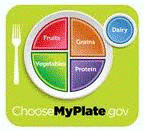Nutrition and Health Sciences, Department of

Department of Nutrition and Health Sciences: Dissertations, Theses, and Student Research
Date of this Version
Summer 2010
Document Type
Thesis
Abstract
Objective: To determine current food handling practices, knowledge and beliefs of primary food handlers with children 10 years old and the relationship between these components.
Design: Surveys were developed based on FightBac!™ concepts and the Health Belief Model (HBM) construct.
Participants: The majority of participants (n= 503) were females (67%), Caucasians (80%), aged between 30 to 49 years old (83%), had one or two children (83%), prepared meals all or most of the time (76%) and consumed meals away from home three times or less per week (66%).
Analysis: Descriptive statistics and inferential statistics using Spearman’s rank correlation coefficient (rho) (p<0.05 and one-tail) and Chi-square were used to examine frequency and correlations.
Results: Few participants reached the food safety objectives of Healthy People 2010 for safe food handling practices (79%). Mixed results were reported for perceived susceptibility. Only half of the participants (53-54%) reported high perceived severity for their children if they contracted food borne illness. Most participants were confident of their food handling practices for their children (91%) and would change their food handling practices if they or their family members previously experienced food poisoning (79%). Participants’ reasons for high self-efficacy were learning from their family and independently acquiring knowledge and skills from the media, internet or job. The three main barriers to safe food handling were insufficient time, lots of distractions and lack of control of the food handling practices of other people in the household. Participants preferred to use food safety information that is easy to understand, has scientific facts, causes feelings of health-threat and has lots of pictures or visuals. Participants demonstrate high levels of knowledge in certain areas of the FightBac!TM concepts but lacked knowledge in other areas. Knowledge and cues to action were most supportive of the HBM construct, while perceived susceptibility was least supportive of the HBM construct.
Conclusion: Most participants demonstrate many areas to improve in their food handling practices, knowledge and beliefs.
Adviser: Julie A. Albrecht


Comments
A thesis Presented to the Faculty of The Graduate College at the University of Nebraska In Partial Fulfillment of Requirements For the Degree of Master of Science, Major: Nutrition and Health Sciences, Under the Supervision of Julie A. Albrecht. Lincoln, Nebraska: July, 2010
Copyright 2010 Adeline Lum